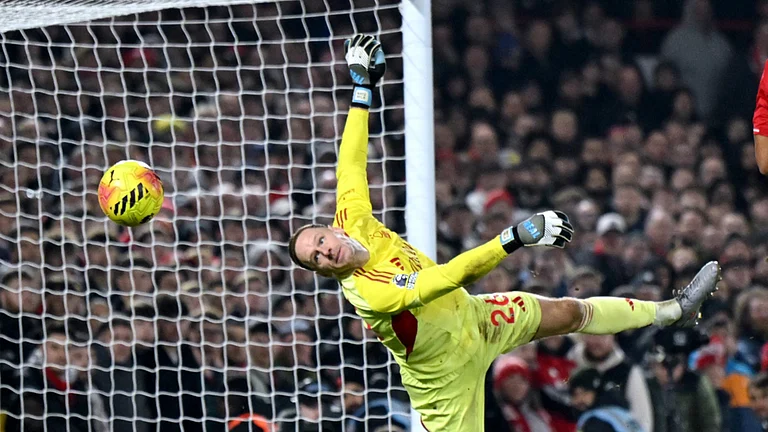Is the NBA doing more harm than good in trying to protect two lakh people as against the 40 million intended beneficiaries of the Sardar Sarovar Dam? Especially since it has been technically established that water can be delivered to the tail-end, Kutch and Saurashtra?
After all that’s happened, after everything that’s been written and said, to be asked this is one of the saddest, hardest things I’ve had to face in a long time. It reminds me of how small and ineffectual a dent one makes when one argues against an article of faith, and that, unfortunately is what the Sardar Sarovar has become to some people-a religious edifice, a deity, a god. And what a twisted, cruel god it is. Let me just give you some bald facts.
- Let’s get one thing straight. The drought is not the reason for the water policies pursued by the State. It is the result of the policies they have pursued over the last 15 years. You can’t and won’t be able to solve the problem unless you understand what caused it. Contrary to what the government would like you to believe, the drought is not a natural calamity. It is man-made. Or should I say State-made? The drought is not due to a lack of rainfall. Saurashtra had 11 inches of rainfall this year. Seven of the 10 talukas in Kutch had 75% of their average rainfall. Yet the reservoirs are empty because they are silted up, and the groundwater levels have dropped to their lowest in a 100 years because of deforestation, and the unrestricted, mechanised exploitation of groundwater. The price for this, of course, is paid by the poorest of the poor who have no access to either tubewells or political clout. Faced with this scale of human misery, they suggest the drought is somehow caused by the absence of the Sardar Sarovar Dam (and the evil NBA) and that the only solution is the dam! What’s the implication? That other states which are also suffering a drought but haven’t planned mega dams ought to conjure them up? Are we in for a rash of Sardar Sarovar clones? According to Central Water Commission data, of India’s 3,200 Big Dams, over 500 are in Gujarat. Dams on the Mahi and the Sabarmati (both miles closer to Kutch and Saurashtra than the Narmada) haven’t solved the drought, but they’ve yielded enough cotton and sugarcane to create a glut, they’ve kept the water parks and the Pepsi-swilling, Mickey Mouse-minded tourists happy even as we speak (Hindustan Times, April 28). But we are expected to believe that what 500 dams could not do, the 501st will-the amazing, astonishing, all-purpose Sardar Sarovar. This is a lie, a venal, dangerous lie that uses human misery to further its own ends.
- For the last 15 years, Gujarat has allocated over 80% of its entire irrigation budget to Sardar Sarovar. It has done this to the exclusion of other smaller, more local, more immediate schemes. In Gujarat’s Eighth Plan (1992-97), out of an irrigation budget of Rs 3,436 crore, 85%-Rs 2,900 crore-was allocated to it. In order to justify this, it says the project will take water to Kutch and Saurashtra. That it will provide drinking water to 40 million people. Take a closer look at the facts. For the sake of argument, let’s for a moment believe all the absurd, computerised, boyzworld pyrotechnics, that claim the Narmada Canal will take water to Kutch and Saurashtra. Let’s overlook the sugar factories, the golf courses, water parks and five-star hotels planned along the way. Let’s believe everything they say. If you look at the project documents, you’ll see, that even on paper, even if everything were to go as planned, the command area irrigates only 1.8% of the cultivable land of Kutch and 9% in Saurashtra. The rest of the water will go to already water-rich areas of central Gujarat. This is the extent of the deceit and cynicism we are up against.
- When will the water reach this 1.8% of Kutch and 9% of Saurashtra? In the year of our Lord 2025 (by which time the dam reservoir will be well on its way to being silted up). This can be confirmed from a water resources ministry document dated October ‘92, filed in the Supreme Court. (This again, if the project is completed as scheduled, not taking into account any delays, such as the four-year SC stay). So what is 1.8% of Kutch and 9% of Saurashtra expected to do until then? What of the rest of the 98.2% of Kutch and 91% of Saurashtra? Should they stand around and watch while the Sardar Sarovar soaks up the state’s irrigation budget, in their name, while the water actually goes somewhere else?
- The claim that Sardar Sarovar will bring drinking water to 40 million-that figure yo-yos around for no apparent reason. It swings between 10 million and 40 million. The fact is providing drinking water to villages was never part of the vision of the planners. Even today, the costs aren’t included in the project costs. When the World Bank commissioned the Independent Review, this was one fact that appalled the Morse Committee. It was one among the many reasons that led to the Bank pulling out of the project. The tenders for doing a feasibility study of the drinking water scheme for Sardar Sarovar were invited only in ‘98. In ‘93 the Narmada Pipeline project was proposed. It envisaged transporting drinking water from the Narmada to Kutch and Saurashtra even without the Sardar Sarovar. The project cost was Rs 300 crore. It could have been completed in three years. Seven years have gone by. Nothing’s been done. Even the dead storage of the dam at its present height has enough water to meet the drinking water needs of Kutch and Saurashtra. The only thing lacking is political will and the funds being used up by the project.
- The important thing to keep in mind now, as this crisis comes to a head, is how do we crawl out of the hole we’ve dug ourselves into? It is encouraging to see, all over the media, the first signs of recognition that something is seriously wrong with what has been happening so far. A lot of attention has been given to the positive peoples’ initiatives, that have demonstrated in a small, but stubbornly successful manner that the way out of this morass is smaller, more local, decentralised projects. The wonderful work of the Tarun Bharat Sangh in Alwar has been recognised, and rightly so, by the President. More power to them. In Kutch and Saurashtra there is a movement called the ‘well-recharging movement’ where thousands of wells have been recharged. Even hardened politicians, the prime minister and the Gujarat chief minister, have begun to talk of rainwater harvesting. This is wonderful. Perhaps the time has come when we will see Big Dams as not the first, but the very last resort.It would mean an end to thirst in Gujarat. It would mean a victory for the principles of democracy. It would mean that we still have hope.






















